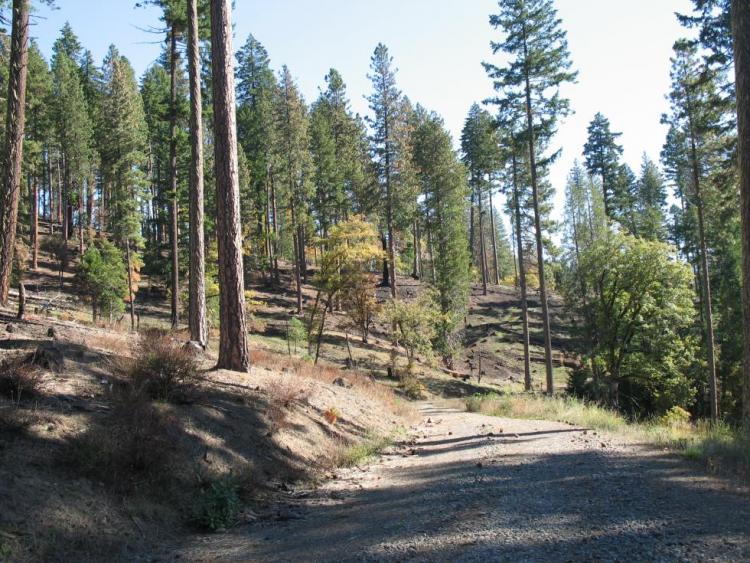Restoring a Cultural and Ecological Landscape in the West Cascades Foothills
The West Cascades foothills once had extensive woodlands and savannas of widely-spaced, large Oregon white oak, ponderosa pine, and Douglas-fir trees with a grass and wildflower understory. Native Americans are thought to have maintained these habitats through the use of fire, which produced forage for big game, improved traveling conditions, and selected for important subsistence plants, such as camas, tarweed, and desert-parsleys.

As a result of changes in fire frequency and intensity after European settlement, Douglas-fir now dominates in many of these areas, and many open woodlands and savannas converted to forests. Almost 95 percent of open oak and pine habitats have been lost in this ecoregion. Currently, remnant patches of oak-pine woodlands and savannas are found on the margins of the Willamette, Umpqua, and Rogue Valleys and some dry, south-facing mid-elevation slopes.
One site with a remnant oak-pine woodland and evidence of Native American use is the area around Jim’s Creek on the Willamette National Forest near Oakridge. The site’s important ecological and cultural value inspired a comprehensive planning effort to restore some of the oak-pine habitat.
Once a savanna with large, scattered oak, pine, and Douglas-fir trees, the area was transitioning into a dense Douglas-fir forest, jeopardizing the survival of the large heritage ponderosa pine trees. Several of the large ponderosa pines have scars characteristic of bark removal. Native Americans removed the inner bark (cambium) for medicine, so these large trees are considered “medicine trees”. However, the large pines were declining in health, and oaks were restricted to the margins of small, rocky openings. Pine and oak trees were not regenerating.
The Willamette National Forest recognized the impending loss of this site and initiated an extensive outreach effort to the communities of Oakridge and Eugene, including political leaders, Native American leaders, the timber industry, and environmental groups to discuss the issues and ask people how they thought the landscape should be managed. Beginning in 2001, stand examinations and ecological studies of current and historical vegetation, small mammal populations, bird species composition, and fish populations were conducted to determine restoration opportunities and to guide management in an adaptive management approach.
In 2007, a Stewardship Contract was awarded to restore about 455 acres in the Jim’s Creek Project Area.

One aspect of the restoration was removal of most of the younger Douglas-fir that had established as a result of the altered fire regime. The timber harvest portion of the Stewardship Contract was completed in 2012 resulting in approximately $300,000 in retained receipts that were used to fund additional restoration actions including the reintroduction of prescribed fire, snag creation, and meadow restoration.
The Stewardship Contract activities will be completed in 2015 but periodic maintenance, such as prescribed fire, will likely be necessary to maintain the restored savannah condition.
Although restoration came too late for some pines and oaks in Jim’s Creek, most of the mature pines survived, and many remaining oaks are experiencing crown expansion. Numerous ongoing studies of the recovering savannah as well as the grass and wildflower understory will provide a valuable guide to further restoration of oak and pine savannah habitat in this ecoregion.
Restoration often takes time and persistence, but the Jim’s Creek project successfully restored an important cultural and ecological landscape, in part due to the time investment in constructing comprehensive partnerships and planning science-based restoration.